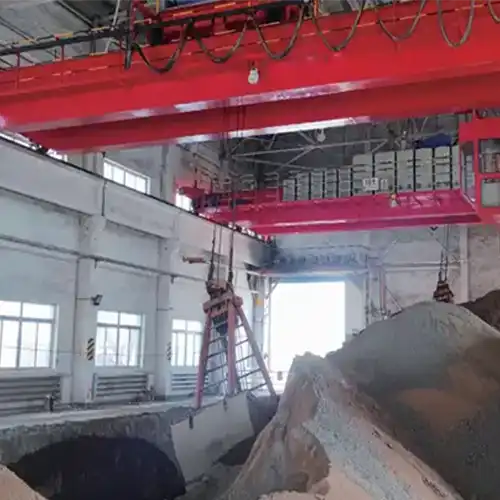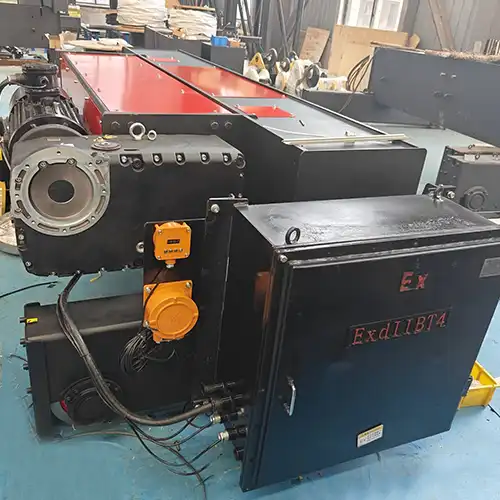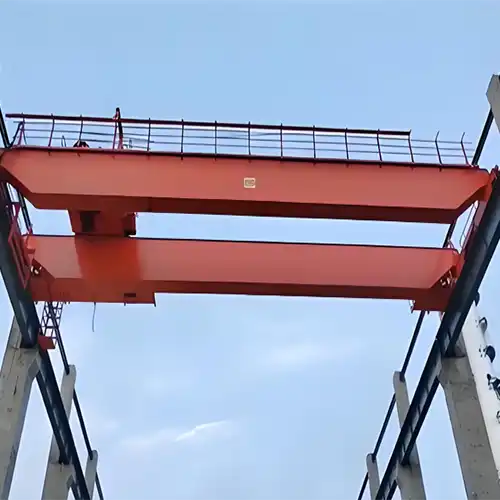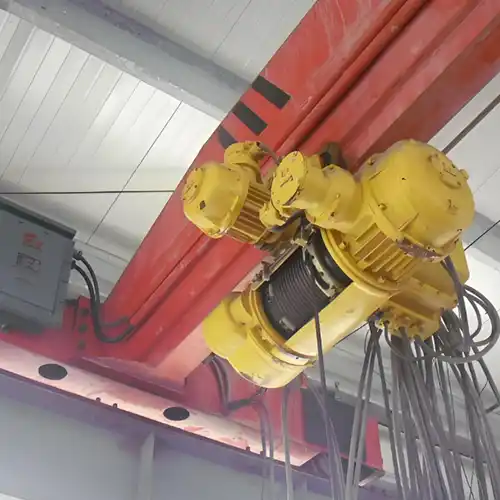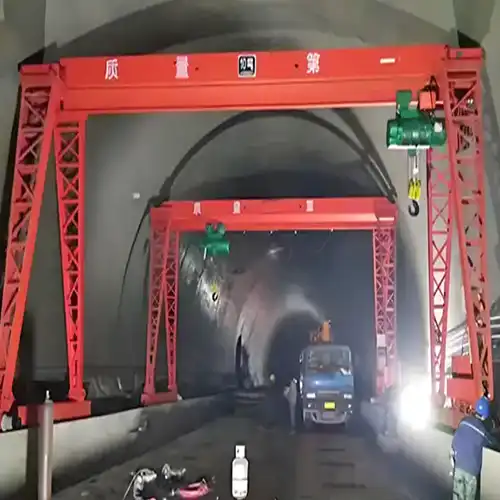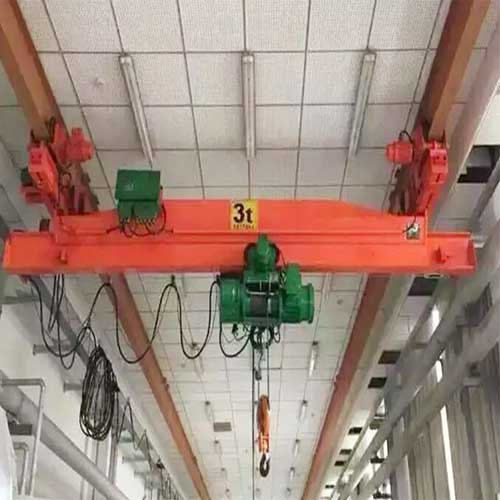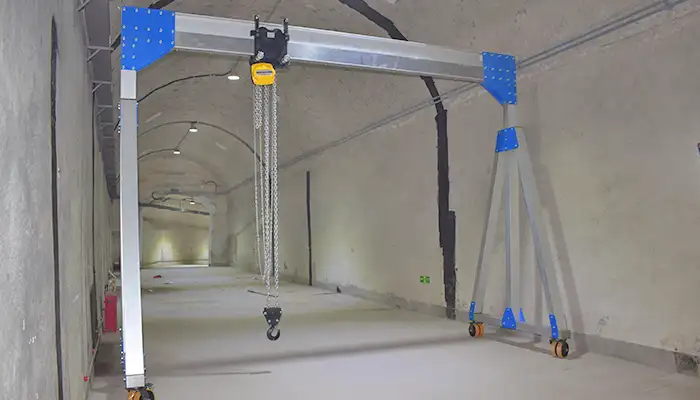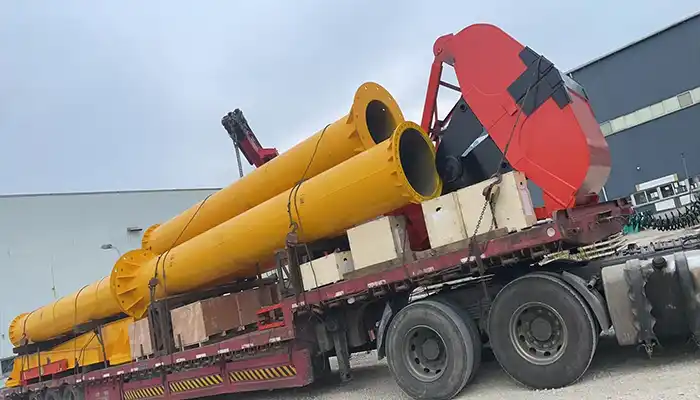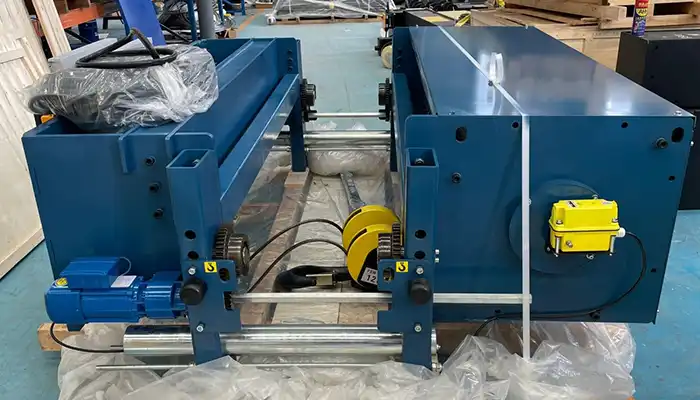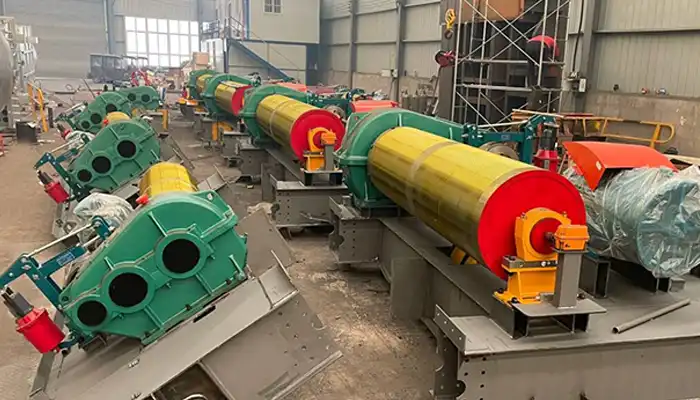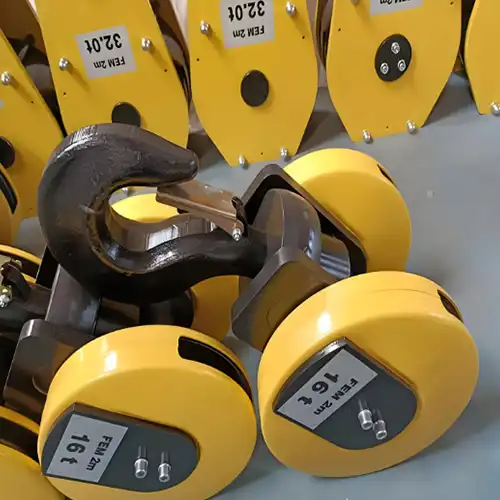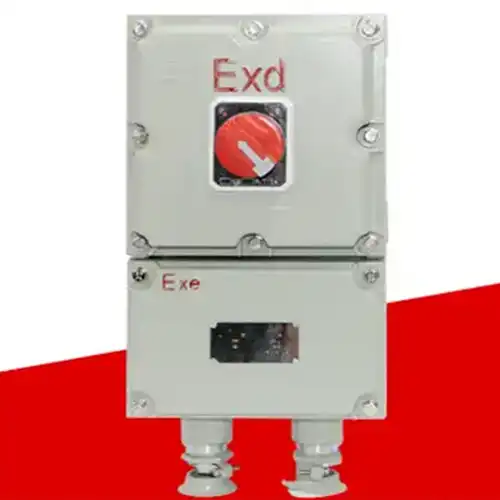Explosion-Proof Cranes for Chemical, Mining & Dust-Prone Industry
1 to 50 Ton Explosion-Proof Cranes for Chemical, Mining & Dust-Prone Industries. Check what plant engineers need to know for safe cranes dust prone zone.
Category: Explosion Proof Cranes
Your Trusted Explosion Proof Overhead Crane Manufacturer & Supplier
1 Ton to 50 Ton Explosion-Proof Cranes for Chemical, Mining
Dust Proof Explosion-Proof Cranes for Combustible Dust Applications: What Plant Engineers Need to Know
Introduction: Why 1 to 50 Ton Explosion-Proof Cranes Matter
Choosing the right crane capacity is critical for your plant. Whether you need to lift light loads or heavy equipment, having a crane that matches your material handling needs makes a big difference. Using a crane that is too small can slow down work or cause safety issues. A crane too large may be costly and hard to operate efficiently. That's why understanding the capacity range—from 1 ton up to 50 tons—is important.
Explosion Risks Are Real in These Industries
Plants in chemical, mining, and dust-prone industries face unique dangers. Flammable gases, combustible dust, and volatile chemicals can ignite easily. A simple spark or overheated motor can cause explosions, risking lives and shutting down operations.
- In chemical plants, vapors and gases are common hazards.
- Mining sites deal with explosive gases like methane and coal dust.
- Dust-prone industries such as grain or wood processing have airborne dust that can catch fire.
Because of these risks, equipment needs special protection. Regular cranes won't do the job safely.
Explosion-Proof Cranes Keep Your Plant Safe and Efficient
Explosion-proof cranes are built with extra safety features. They prevent sparks, contain heat, and stop any electrical faults from igniting the hazardous environment. These cranes are designed to work safely within classified explosive zones.
By choosing an explosion-proof crane with the right lifting capacity (from 1 to 50 tons), you get:
- Safety — Reduces risk of fire or explosion during lifting operations.
- Reliability — Designed to handle your plant's specific loads and conditions without frequent breakdowns.
- Efficiency — Proper capacity means faster, smoother handling of materials and equipment.
- Compliance — Meets local and international explosion-proof safety standards.
In short, explosion-proof cranes protect your workers, your plant, and your productivity. Selecting the right capacity crane ensures you meet your material handling needs without compromising on safety or cost.
Industry-Specific Explosion Risks and Material Handling Needs
Chemical plants handle many dangerous materials every day. These include flammable liquids, gases, and various chemicals that can easily catch fire or explode if not handled properly. This makes safety the top priority when choosing cranes.
What kinds of materials are lifted?
- Drums and containers filled with chemicals
- Tanks and reactors for processing
- Heavy equipment used in production
Because of this variety, crane capacities in chemical plants can vary a lot:
- Light to medium loads: 1 to 20 tons, for handling smaller containers and routine materials
- Heavy equipment: Up to 50 tons, for moving large vessels or machinery
Chemical plants also have some tough environmental challenges:
- Corrosive atmospheres: Chemicals and vapors can damage crane parts if they're not protected
- Flammable vapors: The air may contain gases that can ignite easily
- High humidity or temperature: These can affect crane operation and safety
Because of these challenges, cranes used here must have:
- Corrosion-resistant coatings and materials
- Sealed motors and electrical parts to keep vapors out
- Explosion-proof certification to ensure safe operation in hazardous zones
In short, cranes in chemical plants must be strong, safe, and reliable to handle both the loads and the tough environment without risking sparks or leaks.
Mining environments are some of the toughest places to operate cranes safely. The main hazards here come from explosive gases and dust, which make explosion-proof cranes a must.
What are the key explosion risks?
- Methane gas: Common in underground coal mines, methane can ignite with the smallest spark.
- Coal dust: Fine dust particles can form explosive clouds when suspended in the air.
Because of these dangers, any spark or overheating in crane components can lead to serious accidents. That's why cranes in mining must be specially designed to avoid ignition sources.
What kind of loads do mining cranes handle?
- Heavy ore loads that need to be moved for processing
- Mining machinery and equipment that can weigh several tons
- Bulk materials like coal or minerals
Typical crane capacities for mining range from 10 to 50 tons, depending on the size of the operation and the equipment being handled.
Mining plants have very harsh working conditions:
- Constant dust exposure that can clog and damage regular crane parts
- Rough handling and shock loads from heavy and uneven materials
- Extreme temperatures and humidity in some underground or open-pit mines
To survive these conditions, explosion-proof cranes for mining must have:
- Dust-tight and sealed electrical enclosures to protect motors and controls
- Heavy-duty mechanical parts that resist wear and shock
- Strong braking systems to handle sudden stops safely
- Robust protective coatings against rust and corrosion
In mining, safety and durability go hand in hand. Choosing a crane that can handle the environment and heavy loads without sparking or breaking down is crucial for smooth and safe operations.
Dust-Prone Industries
Dust-prone industries include places like grain handling, wood processing, pharmaceuticals, and powder manufacturing. In these plants, combustible dust is a serious explosion hazard that requires special care.
What makes dust dangerous?
- Fine dust particles can easily become airborne, creating explosive dust clouds.
- Even a tiny spark can ignite these clouds, causing a dust explosion.
- Secondary explosions can happen when settled dust layers ignite after a primary event.
Typical crane loads in dust-prone plants:
- Usually lighter to medium loads between 1 to 20 tons.
- Handling bags, containers, powder-filled vessels, or small machinery.
Because of the dust risk, cranes in these plants must be designed to keep dust out and avoid creating sparks.
Key design needs include:
- Dust tightness: All electrical and mechanical parts should be sealed to prevent dust from entering.
- Spark prevention: Use of non-sparking materials and special coatings on brakes, hoists, and other moving parts.
- Smooth surfaces: To avoid dust accumulation and make cleaning easier.
- Easy maintenance: Quick access to clean and inspect components without compromising safety.
In dust-prone industries, explosion-proof cranes must not only be safe but also practical for frequent cleaning and inspection. This helps prevent dust buildup that could lead to a fire or explosion.
| Industry | Explosion Risks | Crane Needs |
|---|---|---|
| Chemical Industry | - Flammable chemicals and vapors.- Corrosive air can damage cranes.- High heat and humidity. | - Handles drums, tanks, heavy equipment.- Loads from 1 to 50 tons.- Rust-resistant parts.- Sealed motors.- Explosion-proof certified. |
| Mining Industry | - Explosive gases like methane.- Dangerous coal dust.- Dust, shocks, rough conditions. | - Handles heavy ores and machinery.- Loads from 10 to 50 tons.- Dust-proof sealed parts.- Strong brakes and tough build.- Rust and wear protection. |
| Dust-Prone Industries | - Dust clouds can explode.- Dust builds up easily.- Sparks cause fires. | - Handles lighter loads (1–20 tons).- Sealed parts to keep dust out.- Non-sparking materials.- Easy to clean and maintain. |
How Plant Features Influence Explosion-Proof Crane Selection
Environmental Conditions and Hazard Zones
When choosing an explosion-proof crane, understanding your plant's environment is key. The conditions where the crane will operate directly affect the type of crane you need.
In Chemical Plants:
- The air can be full of corrosive chemicals and vapors.
- These substances can damage crane parts if they aren't protected well.
- Temperatures might be high or fluctuate, so the crane must handle heat without failing.
- Vapors can be highly flammable, requiring cranes to have tight seals and explosion-proof motors.
In Mining Plants:
- The presence of hazardous gases like methane creates strict safety requirements.
- Dust concentrations can be very high, meaning cranes must be sealed against fine particles.
- The crane might work in underground tunnels or open pits with varying temperatures and humidity.
In Dust-Prone Industries:
- Airborne dust can create explosive atmospheres, especially in grain, wood, or powder processing.
- Dust can settle on crane surfaces and build up over time, increasing risk.
- Cranes need to be designed to prevent dust ingress and allow for easy cleaning.
Hazard Zone Classifications and Certifications
To make sure a crane is safe for your environment, it must meet recognized hazard zone standards:
- ATEX (Europe): Defines equipment requirements based on explosive gas and dust zones.
- IECEx (International): Similar to ATEX, for global use.
- NEC / NFPA (USA): Standards that classify hazardous locations and specify equipment requirements.
Zones are classified by how likely explosive gases or dust are to be present and for how long. For example:
- Zone 0/Zone 20: Continuous presence of explosive atmosphere.
- Zone 1/Zone 21: Likely presence under normal operation.
- Zone 2/Zone 22: Less likely, but possible presence.
Your crane must be certified for the right zone to ensure it can safely operate without causing ignition.
| Industry | Main Risks | What the Crane Needs | Hazard Zones & Certifications |
|---|---|---|---|
| Chemical Plants | - Corrosive chemicals and vapors- Flammable gases- High or changing temperatures | - Rust-proof materials- Sealed motors and parts- Handles heat safely | Zones: 0, 1, 2 (gas)20, 21, 22 (dust)Certifications: ATEX, IECEx, NEC/NFPA |
| Mining Plants | - Methane gas- Coal dust and other fine particles- Rough, dusty conditions | - Dust-tight design- Flameproof parts- Strong build for harsh use | Zones: 1, 2 (gas)21, 22 (dust)Certifications: ATEX, IECEx, NEC/NFPA |
| Dust-Prone Industries(like grain, wood, or powders) | - Combustible dust in the air- Dust build-up on crane parts- Risk of sparks causing fire | - Fully sealed structure- Spark-proof components- Easy to clean | Zones: 20, 21, 22 (dust)Certifications: ATEX, IECEx, NEC/NFPA |
This version keeps things simple, practical, and focused on what plant engineers and owners really need to know. Let me know if you'd like to add visual examples or make it part of a printable guide.
Choosing the right explosion-proof crane for your plant's environment prevents costly accidents. It ensures compliance with safety laws and keeps your workers safe. A crane not suited for your hazard zone can cause sparks, failures, or shutdowns.
Operational and Layout Considerations
When selecting an explosion-proof crane, how your plant operates and is laid out plays a big role. The crane must fit into your workspace and work well with your processes.
Matching Crane Capacity to Load Type and Weight
- First, know exactly what you will be lifting.
- Are your loads light, like small chemical containers or bags of powder? Or heavy, like large mining machinery?
- The crane's capacity should match the heaviest and most frequent loads to avoid overloading or underuse.
- Using the right capacity improves safety and extends crane life.
Space Constraints and Runway Design
- Many plants, especially older or underground ones, have limited space.
- Low ceilings, narrow aisles, or tight corners affect crane size and movement.
- Runway beams must be designed to fit the available space while supporting the crane safely.
- Custom runway design might be necessary in confined plants to maximize working area without compromising safety.
Integration with Existing Control and Safety Systems
- Your crane should easily connect with your plant's control systems.
- Explosion-proof cranes often come with remote controls or automation to reduce operator risk.
- Safety systems like emergency stops, overload sensors, and limit switches need to be compatible with your existing setup.
- Proper integration means smoother operation and faster response in emergencies.
| Tip | Explanation |
|---|---|
| Select crane capacity based on your real load needs | Match the crane size to your actual lifting requirements. Avoid oversizing or undersizing for better performance and safety. |
| Consider plant layout carefully to design safe and space-efficient runways | Plan your crane runway based on building dimensions and workflow. This helps ensure smooth, safe crane operation. |
| Make sure the crane's controls and safety features work with your current systems | Ensure the crane's electrical and safety systems are compatible with your existing setup to avoid delays and extra costs. |
| Plan for installation, inspection, and maintenance | A good maintenance schedule keeps the crane reliable and extends its service life while maintaining safety compliance. |
Compliance and Safety Standards
When working in hazardous environments, safety is not just a priority—it's the law. Explosion-proof cranes must meet strict standards to keep your plant safe and compliant.
Key Certifications for Explosion-Proof Cranes
To ensure your crane is suitable for explosive atmospheres, it must carry recognized certifications that prove it has passed rigorous safety tests. These certifications confirm the crane can operate without causing sparks or overheating in hazardous zones. The main certifications to look for include:
- ATEX (Europe): Ensures cranes meet strict requirements for use in explosive atmospheres.
- IECEx (International): Globally recognized certification for explosion-proof equipment.
- NEC/NFPA (USA): Covers safety standards and classifications for hazardous locations.
- ISO Certifications: Quality management standards ensuring reliable manufacturing and design.
Why Certifications Matter:
Certified cranes protect your workers and ensure your plant meets legal safety requirements. Non-certified equipment can lead to accidents, fines, or forced shutdowns. Having these certifications builds trust in your crane's performance and durability.
The Role of Maintenance Plans
Even the best explosion-proof crane needs regular care. A proper maintenance plan is essential to keep the crane running safely and efficiently. Without regular checks and upkeep, safety features can fail and hazards can go unnoticed.
Maintenance plans should cover several important areas to prevent breakdowns and accidents:
- Routine inspections of electrical components to catch wear or damage early
- Checking seals and enclosures to prevent dust or gas leaks
- Testing brakes, limit switches, and safety devices regularly
- Cleaning to avoid buildup of dust or corrosive residues
- Keeping detailed maintenance records for compliance and safety audits
Regular maintenance extends the crane's life, reduces downtime, and helps your plant stay safe and productive.
| Key Point | What It Means |
|---|---|
| Choose certified cranes | Make sure the crane has proper explosion-proof certifications based on your plant's hazard zone (e.g., ATEX, IECEx, NEC). |
| Stick to maintenance | Regular checks and servicing keep the crane safe, reliable, and performing well over time. |
| Combine compliance with care | Certifications + proper upkeep = a safer, more efficient workplace. |
Essential Explosion-Proof Crane Features by Capacity
Electrical and Mechanical Safety Features
No matter the crane size, safety starts with strong electrical and mechanical design. Explosion-proof cranes use special features to prevent sparks and contain any potential ignition sources.
- Flameproof enclosures and sealed components: All cranes have motors, control panels, and electrical parts housed in flameproof cases. These prevent flames or sparks from escaping and igniting surrounding gases or dust. This is a must-have for every capacity range.
- Non-sparking brakes and hoists: The brakes and hoisting mechanisms are designed with materials and finishes that won't produce sparks during operation. These are customized to fit the load capacity — lighter cranes use smaller, precise parts, while heavier cranes need more robust components.
- Corrosion-resistant materials: Especially important in chemical plants where corrosive vapors attack metals. Stainless steel, special paints, and coatings help protect crane parts from rust and damage, keeping them safe and reliable.
Capacity-Specific Design Considerations
Explosion-proof cranes come in different sizes, each designed to meet the unique challenges of their capacity range. Here's what you can expect at different load levels:
- Small cranes (1–10 tons):
These cranes are compact and easy to operate. They often work in tight spaces and need tight dust and vapor protection. Smooth controls and simple maintenance are key since they often handle lighter, frequent loads. - Medium cranes (10–25 tons):
These balance ruggedness with precision. They can handle heavier materials but still require smooth control for delicate positioning. Their design includes stronger frames and motors but maintains efficient operation and safety features. - Heavy cranes (25–50 tons):
For large, heavy loads, these cranes have reinforced structures to support the weight. Heavy-duty motors and gearboxes provide the power needed. Advanced safety systems like multiple limit switches, overload protection, and redundant brakes are standard to handle the risks involved.
Operator Safety and Automation
Safety doesn't stop at design — operator protection and automation are critical to reducing accidents and improving efficiency.
- Remote controls and automation: Many explosion-proof cranes come with wireless or wired remote controls, allowing operators to work at a safe distance from hazardous zones. Automation options can include programmed movements or automatic load handling to reduce human error.
- Sensors and safety devices: Depending on crane size, sensors monitor key factors like overload, speed limits, and emergency stops. Small cranes may have basic safety sensors, while larger cranes feature advanced monitoring systems integrated into the control panel.
| Category | Feature | Purpose & Typical Application |
|---|---|---|
| Electrical & Mechanical Safety | Flameproof Enclosures | Prevent sparks or flames from escaping. Used on motors, control panels, wiring for all crane sizes. |
| Sealed Components | Keep out gas, dust, and moisture. Required across all crane capacities. | |
| Non-Sparking Brakes/Hoists | Avoid ignition during operation. Materials and design tailored to crane load size. | |
| Corrosion-Resistant Materials | Protect against chemicals and rust. Especially important in chemical plants and harsh environments. | |
| Capacity-Specific Design | Small Cranes (1–10 tons) | Compact, easy to handle, tightly sealed. For light, frequent lifting in small or confined spaces. |
| Medium Cranes (10–25 tons) | Strong frame and precise controls. Handles bulk materials with safety and control. | |
| Heavy Cranes (25–50 tons) | Reinforced build, powerful motors, and extra safety systems. For moving large machinery or heavy materials. | |
| Operator Safety & Automation | Remote Controls | Allows operation at a safe distance. Used for all crane sizes, especially in high-risk or tight areas. |
| Automation Options | Reduce manual errors with programmed or automatic movements. More common in medium and heavy cranes. | |
| Safety Sensors | Monitor overload, speed, and emergency stops. Basic sensors on small cranes; advanced systems on heavy cranes. |
Matching Explosion-Proof Cranes to Your Plant's Industry and Needs
Chemical Plants
Chemical plants present unique challenges when selecting explosion-proof cranes. These environments contain corrosive vapors, flammable gases, and sensitive materials that demand cranes built specifically to handle these risks safely and efficiently.
Corrosion Resistance and Vapor Containment
- In chemical plants, corrosive vapors and chemicals can quickly degrade standard crane parts.
- Explosion-proof cranes here use stainless steel components, special coatings, and sealed enclosures to resist corrosion and prevent chemical damage.
- Sealed motors and controls keep vapors out, reducing the risk of ignition.
- All cranes, whether small or heavy-duty, must maintain this level of protection to ensure longevity and safe operation.
Precision Lifting for Sensitive Materials
- Chemical containers, drums, and reactors are often fragile or hazardous if dropped.
- Cranes in these plants need smooth, controlled movements and accurate positioning to avoid spills or accidents.
- Features like variable speed hoists and fine control brakes help operators lift and place loads gently.
- Smaller cranes (1-10 tons) are typically used for handling chemical containers, while medium and heavy cranes may lift large reactors or equipment during maintenance and installation.
For chemical plants, corrosion resistance and vapor-tight construction are non-negotiable. Smooth, precise operation helps protect sensitive loads and ensures safety in a high-risk environment.
Mining Plants
Mining environments are among the toughest places for cranes to work. The conditions are harsh, dusty, and often filled with explosive gases like methane. Your cranes must be built to withstand these challenges while handling heavy loads reliably.
Heavy-Duty Cranes for Rough, Dusty Conditions
- Mining cranes typically handle medium to large capacities — from about 10 tons up to 50 tons or more.
- They lift heavy ores, machinery parts, and mining equipment.
- These cranes need robust, reinforced frames and heavy-duty motors to handle the rough usage and weight.
- Durability is key: they must operate reliably day after day in abrasive, dirty conditions.
Dust Sealing and Explosion Protection
- Mining dust, especially coal dust, is highly combustible. Explosion-proof cranes must have excellent dust-tight seals on all moving and electrical parts.
- Flameproof enclosures protect motors and controls from sparks and prevent ignition of flammable gases.
- Components are often coated or made with wear-resistant materials to handle abrasion from dust particles.
- Some cranes come with automatic dust purging or pressurization systems that keep dust from entering sensitive areas.
In mining plants, your crane must be a heavy-duty workhorse built to resist dust, abrasion, and explosive gases. Dust sealing and explosion-proof design keep your operation safe and reliable even in the harshest conditions.
Dust-Prone Industries
Industries like grain processing, woodwork, pharmaceuticals, and powder manufacturing face serious risks from combustible dust. Explosion-proof cranes here must prioritize dust-tightness and spark prevention to keep the plant safe.
Fully Sealed Cranes with Spark-Proof Design
- Cranes in dust-prone industries are typically small to medium capacity, ranging from 1 to 20 tons, handling lighter materials or smaller equipment.
- All electrical and mechanical parts are fully sealed to prevent dust ingress that could cause buildup inside the crane.
- Spark-proof materials and non-sparking brakes reduce the risk of igniting dust clouds during operation.
- Compact design helps fit cranes into smaller or more confined processing areas common in these industries.
Emphasis on Dust Extraction and Minimizing Ignition Sources
- Many plants use dust extraction or ventilation systems to keep the air clean; cranes must be compatible with these systems and not interfere.
- Components are designed to minimize friction and heat generation, two common ignition sources in dusty environments.
- Special coatings and smooth finishes help prevent dust accumulation on crane surfaces.
- Regular maintenance schedules are essential to keep dust from building up and compromising safety features.
In dust-prone industries, fully sealed, spark-proof cranes are essential to prevent ignition of combustible dust. Coupled with dust extraction and careful design, these cranes help maintain a safe, productive work environment.
Matching Explosion-Proof Cranes to Your Plant's Industry and Needs:
| Industry | Key Features | Details & Applications |
|---|---|---|
| Chemical Plants | Corrosion Resistance and Vapor Containment | Use stainless steel, special coatings, sealed enclosures to resist corrosive vapors and chemicals. Sealed motors and controls prevent ignition. |
| Precision Lifting for Sensitive Materials | Smooth, controlled movements and accurate positioning with variable speed hoists and fine brakes. Smaller cranes (1-10 tons) handle containers; larger cranes handle reactors and equipment. | |
| Overall Needs | Corrosion resistance and vapor-tight construction are critical. Smooth, precise operation protects sensitive loads and ensures safety. | |
| Mining Plants | Heavy-Duty Cranes for Rough, Dusty Conditions | Cranes handle medium to large loads (10-50 tons+), with reinforced frames and heavy-duty motors built to withstand abrasion and rough use. |
| Dust Sealing and Explosion Protection | Dust-tight seals and flameproof enclosures protect against coal dust and methane. Some cranes have automatic dust purging or pressurization systems. | |
| Overall Needs | Heavy-duty, abrasion-resistant cranes with excellent dust sealing and explosion-proof design for safety and reliability in harsh conditions. | |
| Dust-Prone Industries | Fully Sealed Cranes with Spark-Proof Design | Small to medium cranes (1-20 tons) with fully sealed electrical and mechanical parts to prevent dust ingress. Use spark-proof materials and brakes. |
| Emphasis on Dust Extraction and Minimizing Ignition Sources | Compatible with dust extraction systems; designs minimize friction and heat to reduce ignition risk. Regular maintenance prevents dust buildup. | |
| Overall Needs | Fully sealed, spark-proof cranes essential to prevent dust explosions and maintain a safe, productive environment. |
Practical Advice for Plant Engineers and Owners
Selecting and maintaining the right explosion-proof crane involves multiple important steps. Here are some practical points to guide you through the process and help you make confident decisions for your plant.
Assess Your Material Handling Loads and Match to Crane Capacity
Start by getting a clear picture of what your plant needs. Understanding the weights and types of materials you handle daily will help you choose a crane that fits perfectly.
- Begin by evaluating the weights and types of materials your plant moves regularly.
- Cranes come in a wide range—from 1 ton up to 50 tons—so pick one that comfortably handles your heaviest loads without being oversized.
- Oversized cranes add unnecessary cost and can be harder to control, while undersized cranes risk damage or failure.
Identify Hazardous Zones and Ensure Proper Explosion-Proof Certifications
Safety depends heavily on matching the crane to your plant's hazardous environment. Knowing your zone classification and choosing the right certified equipment is key.
- Know the specific hazard classifications in your plant: Are you working in Zone 1, Zone 2, or Class I, Division 1?
- Make sure the crane has certifications like ATEX, IECEx, or NEC matching your zone requirements.
- Using uncertified equipment can lead to accidents, legal penalties, or insurance problems.
Plan for Installation, Inspection, and Ongoing Maintenance Tailored to Crane Capacity
Proper installation and ongoing care keep your crane running safely and efficiently for years. This step is crucial regardless of the crane size you choose.
- Installation is not one-size-fits-all. Larger cranes may need reinforced runways and specialized rigging.
- Set up a regular inspection schedule based on crane size and workload—heavier cranes and harsh environments require more frequent checks.
- Maintenance plans should cover cleaning, lubrication, testing of safety devices, and electrical inspections.
Choose Experienced Manufacturers That Offer Customizable Solutions
A crane tailored to your plant's unique needs can make all the difference. Partner with manufacturers who understand explosion-proof requirements and can offer flexibility.
- Look for suppliers with proven experience in explosion-proof cranes for your industry.
- Customizable solutions mean your crane will fit your plant's layout, load types, and safety needs perfectly.
- Good manufacturers provide technical support, training, and after-sales service to keep your crane reliable for years.
| Step | What to Do | Why It's Important |
|---|---|---|
| Know Your Loads | Check the weight and types of materials you handle daily. | Pick a crane that fits your needs — not too big or small. |
| Check Hazard Zones | Find out your plant's hazard zone and get the right certified crane. | Keeps your plant safe and meets legal rules. |
| Plan Installation & Care | Install cranes properly and schedule regular maintenance. | Keeps your crane working safely and longer. |
| Choose Good Manufacturers | Work with experienced suppliers who offer custom solutions. | Get a crane that fits your plant perfectly and good support. |
Conclusion: Selecting the Right Explosion-Proof Crane for Safety and Efficiency
Choosing the right explosion-proof crane is about more than just lifting heavy loads. It's about protecting your plant, your people, and your productivity.
The correct crane capacity—from 1 ton up to 50 tons—helps ensure safe and efficient handling of materials. Tailored designs take into account the tough demands of chemical plants, mining operations, and dust-prone industries.
By working closely with trusted, experienced suppliers, you can get a crane solution that fits your plant's unique environment and handling needs perfectly. This partnership is key to long-term safety and operational success.
Main Projects
Related Products
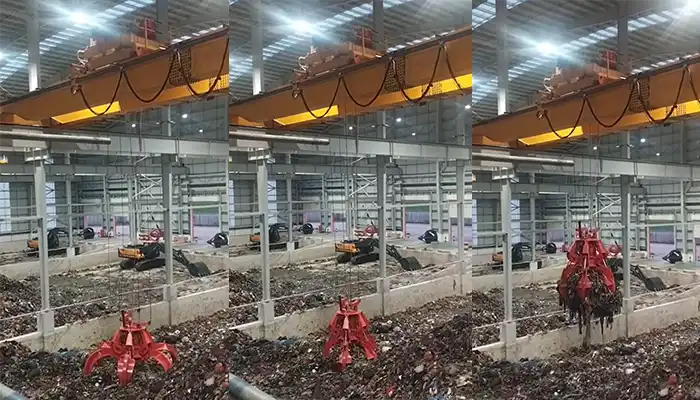
Supplied three grab bucket crane kits to Indonesia, enhancing garbage handling efficiency with high load capacity and reliable performance.
Free consultation to Confirm Parameters & Specifications and Get
Latest Crane Price & Crane Rate.
- Types of overhead cranes : _______?
- Optional: Overhead travelling crane, goliath gantry crane,Slewing jib crane, Single girder or double girder crane,small portable crane or kbk crane, etc.
- Capacity of overhead crane: _______?
- Optional: 0.25ton, 0.5 ton, 1 ton, 2 ton, 3ton, 5 ton, 10 ton,15ton, 20ton, 25 ton, 30ton,35ton, up to 550ton, etc.
- Crane span & lifting height : _______?
- Crane travelling length : _____?
- Control of overhead crane:_______?
- Optional: pendant/ remote/cabin control
- Voltage supply of overhead crane:_____?
- Eg,: 380V50/60HZ,3Phase or others,etc.
- Application/usage of crane:_______?
- Eg,: Steel mill, ,injection mold, cement,stone, concrete,granite, general manufacturing, etc.
Just leave a message via the contact form and our hoist and crane engineer will contact you with in 24working hours.
Get In Touch
